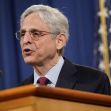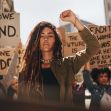The power of the press, a cornerstone of holding the government accountable, is considered sacred in witnessing injustice and informing the public without government limitation through censorship or exertion of influence. Throughout global history, particularly in times of war and national strife, political corruption walks hand-in-hand with the suppression of a free media landscape.
In the United States, the media’s collective eye has held its gaze on the deluge of public outcry since the May 25, 2020 killing of George Floyd during an arrest in Minneapolis, Minnesota. Protests erupted across the nation to decry police brutality and demand accountability. Most protests were hallmarks of peaceful public assembly, but the sustained unrest has also exhibited riot behavior: looting, vandalism, and civic breaches of the peace. Law enforcement responses have regularly exacerbated the tension.
The police reform-focused protests grew substantially in Portland, Oregon, where federal officers were deployed beginning June 27 to aid local law enforcement and protect federal property from damage. Subsequent media coverage of the Portland protests unveiled disturbing, unprovoked uses of force by law enforcement against civilians and press alike. These repeated attacks by federal agents on journalists led U.S. District Judge Michael H. Simon to issue and extend orders protecting the press from federal forces.
Encounters between officers and members of the media (actively identified as authorized press, both visibly and verbally) include assault rifles pointed threateningly in faces, pepper balls and tear gas being thrown directly at them when they were far from protests, and numerous arrests despite lack of probable cause. Dozens of statements allege that unprovoked federal officers shot journalists with impact munitions.
Law enforcement representatives blame the widespread use of force on escalating riot behavior, a claim that has been recurrently debunked with evidence from both civilian and news media. Often, the assaults on the press have occurred while they are physically separated from the protestors in designated or sidelined areas and when they have been abiding by law enforcement’s directions.
Despite contrasting accounts blurring the line between protests and riots, they remain highly newsworthy events of national and political interest. The Bill of Rights grants the power to maintain a free media landscape by keeping the public informed and the government accountable. However, the media must be present to carry out these rights, and brutal aggression from law enforcement officers—the central motivation for the rallies in the first place—has been markedly unabashed, even and especially when aimed at members of the press.
Based on the First Amendment, Judge Simon exempted law-abiding members of the press and authorized legal observers from adhering to dispersal orders and instructed that excessive force is no longer to be used against them. He ordered local police to cease coordination with federal law enforcement and barred all agents from arresting, threatening to arrest, seizing equipment from, or otherwise targeting reporters covering the protests.
The orders come in the form of a preliminary injunction and temporary restraining order against agents from the Department of Homeland Security, the U.S. Customs and Border Patrol, and the U.S. Marshals. They include additional direction to hold federal forces liable for violating the orders, dismantling the legal armor of qualified immunity. The protections extend to authorized press and legal observers, including freelance journalists and representatives from groups such as the ACLU and National Lawyers Guild. Law enforcement is also prohibited from seizing any recording equipment from these groups and individuals. The latest injunction remains in effect until October 30.
Portland Chief of Police, Chuck Lovell, reportedly stated that he does not think accredited reporters have any special protections under the Constitution and insists that law enforcement has reacted in proportion to crimes committed. U.S. Department of Justice attorney Andrew Warden agrees, insisting that the press enjoy “no special rights of access above and beyond the public.”
These sentiments were partially responsible for prompting Simon’s orders against the federal officers. Indeed, the First Amendment does not grant additional access to media over that of demonstrators, as the power of the press has often aligned legally with citizens’ freedom of speech. But the court determined that the tactics of law enforcement in Portland have been used to target, intimidate, and discourage the free press’s rights and responsibilities to operate as a safeguard against abuse of government power. Their actions effectively hinder and prevent the documentation of both officers and protestors, which violates the Constitution’s commitment to maintaining a healthy democracy through transparency. Allowing the media to cover these events is a civic duty, rather than any special indulgence of access.
The modern ideals of a free press originally circulated in 18th-century England within the pages of Cato’s Letters, which spoke out in an endeavor to criticize corrupt rulers. Together with those defining freedom of speech and the right to protest, these principles shaped the First Amendment to the U.S. Constitution. According to Thomas Jefferson, “Our liberty depends on the freedom of the press, and that cannot be limited without being lost.” The First Amendment was ultimately incorporated through the Fourteenth Amendment to apply to state governments as well as federal.
Historically, legal disputes regarding free media publications have been argued in contexts of malicious defamation intent or potential national security threats. Like free speech, the press is not ultimately unlimited in its reach and remains liable for security endangerment and publishing false information. The press’s power does not come without responsibility; journalists and legal observers at rallies or otherwise are still subject to the law.
However, as far as government interference or limitations on the media, relevant precedence to consider today dates back to a 1931 U.S. Supreme Court ruling on Near v. Minnesota. The case involved the state of Minnesota barring a news publication called The Saturday Press from printing stories that claimed corrupt political officials were involved with gang activity.
The justices ruled that, under the First Amendment, the press must remain immune to “prior restraint.” Prior restraint is “government action which prohibits speech or other expressions before the speech happens.” In 1971, the Supreme Court once again ruled in favor of the news media’s essential immunity from prior restraint when the New York Times and the Washington Post sought to publish confidential military documents that illustrated the severity of the government’s dishonesty with the American people regarding the Vietnam War.
Despite remarking adversely on government actions, their freedom to publish was upheld—the government could not be allowed to abuse its power to suppress public knowledge of the government abusing its power. As it stands, the First Amendment protects and celebrates this mission of free press and expression. In Portland—and all over the country—media exposure of government activity at recent protests has been an integral addition to the rallying cry against militarized policing. Simon’s injunction directly addresses the need for transparency via a free press. “Without journalists and legal observers, there is only the government’s side of the story,” he said.
The federal government has appealed the judge’s orders with claims that some demonstrators have masqueraded as members of the press in order to engage in unlawful activities. Such an assertion contrasts prior insistence that any targeting of the plainly identified press was purely incidental. The court reviewed video evidence of these assertions and found little evidence of civilians using fake press identification as a means for wrongdoing. Furthermore, the court found that federal forces’ targeting of the media and legal observers has been anything but incidental. Rather, their actions in Portland have been deliberate, calculated, and incessant.
Simon has upheld and extended his directions despite urging from Department of Justice lawyers, stating in his 61-page opinion and order that the “enforcement tactics of the (federal law enforcement) would chill a person of ordinary firmness from continuing to engage in the protected activity,” thereby deterring journalists and legal observers from exercising their First Amendment rights to gather news and document government conduct.
While city and state officials continue to denounce the unwanted presence of federal forces in Portland, ongoing media coverage has been necessary to document grievances and constitutional violations as well as to inform the public on the demonstrations themselves. Clashes between citizens and law enforcement during these widespread rallies are of such national concern and consequence that targeted government interference justifiably reads as deliberate censorship.
Simon’s actions do not impose new or specially granted privileges to the press. Instead, the orders are a firm declaration of existing constitutional rights and a reminder that the truth will not be suppressed when it is needed most.






